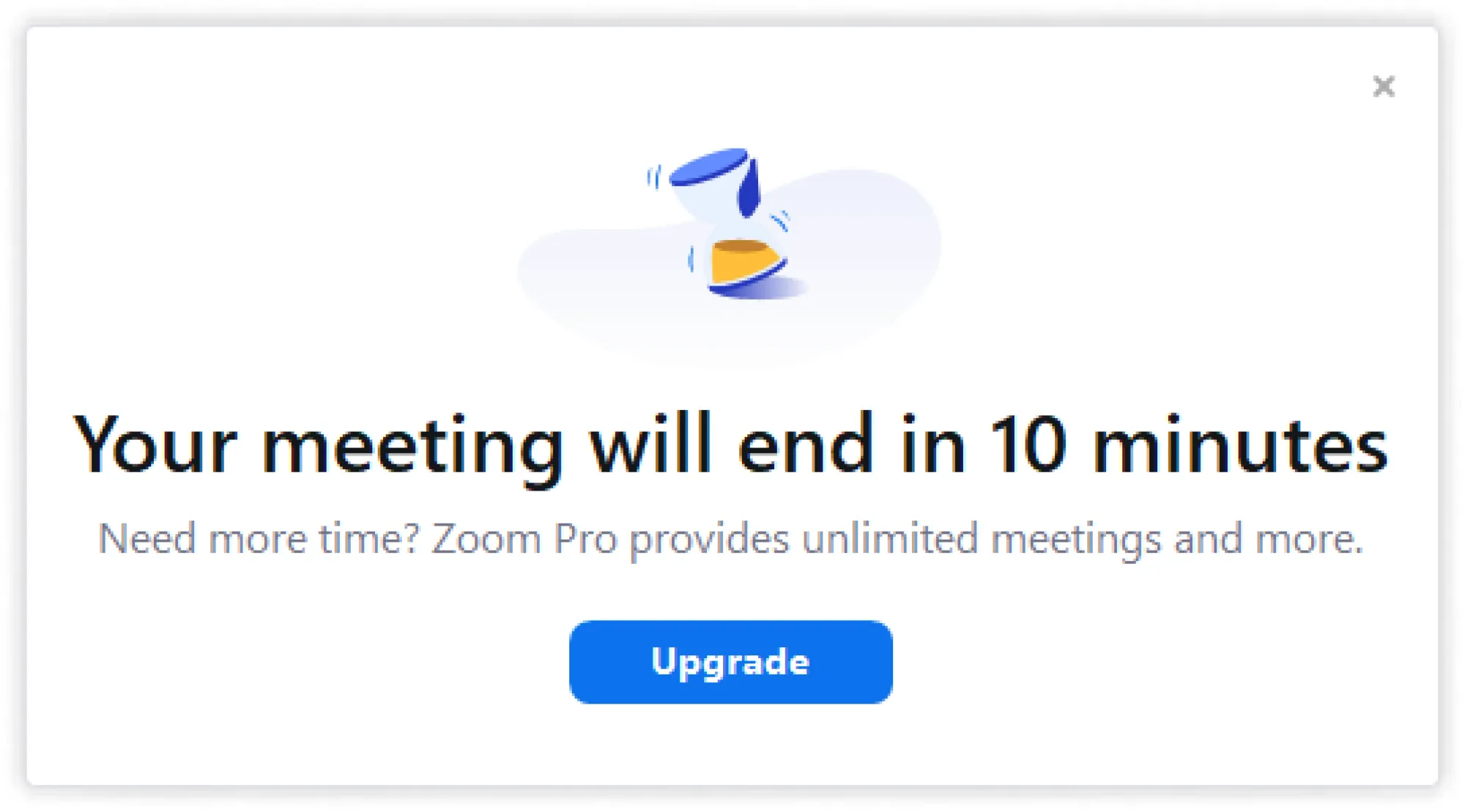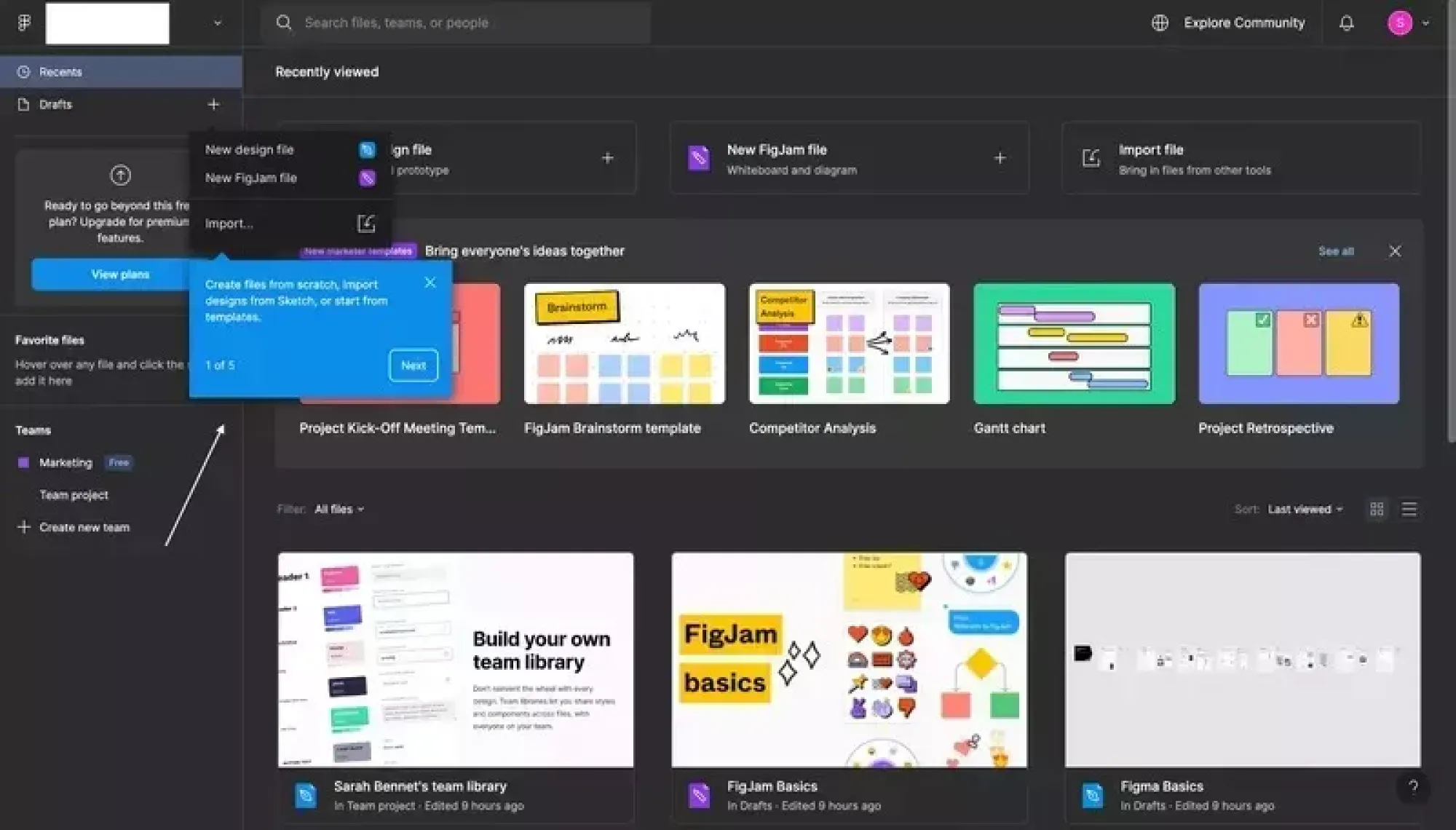For most organizations, scalability is the ultimate goal. In an ideal world, users can discover your product, experience its value, and upgrade without ever fully needing to talk to a salesperson.
This isn’t some pipe dream, though. This is the foundation on which the product-led growth model is built.
In a product-led organization (or PLO), the product is the primary driver of customer acquisition, conversion, and retention. The product itself is the key touchpoint and growth driver. From the moment that a customer first comes into contact with the product, it offers value, helping to facilitate a customer journey that is largely self-service, with a major focus on user experience.
How exactly does this look? We’ll go deeper into the key components of a product-led organization further down in this post, but some typical attributes are: offering free or reverse trials, using a freemium model, and seamless onboarding.
How a product-led organization differs from sales- or marketing-led orgs
In a sales-led model, the organization focuses on driving growth through human touchpoints like outbound calls, demos, and relationship-building. This is perhaps the most traditional growth strategy of the three.
In organizations that follow a marketing-led model, growth is typically generated by content, brand awareness, and campaigns to attract customers. Many companies with products in an emerging market tend to take this approach to generate some buzz around their product.
Product-led models, on the other hand, let users explore the product themselves as a vehicle for growth. Things like self-service trials and freemium plans encourage organic engagement and repeat use. In this scenario, users can get up and running in the platform to experience the core functionality without interacting with sales teams at all.
Components of product-led growth
There are 3 core components of a product-led growth strategy, and they are all enacted at strategic points in the user journey.
Acquisition
The first step in the product-led journey begins before the user enters the platform. Users are empowered to sign up and start using the product without sales involvement.
This is becoming more and more common in the SaaS industry. Products like Trello and Notion allow users to get started immediately after signing up, often through a freemium or trial model. Users often don’t even have to enter their credit card details, removing a massive barrier to experiencing the platform.
The goal here is for users to begin understanding the value of the platform more quickly and directly, with the hope that they will upgrade to paid or even enterprise plans down the road.
Conversion
Once the user is in the platform, the product itself drives upgrades to paid or higher-level plans.
By offering gated premium features or scaling usage-based pricing, SaaS companies are able to transition users from free to paid users in a way that feels really natural (and necessary) to users.
Zoom is a great example of this in action. They offer free users a limited meeting duration, encouraging businesses to convert to paid plans for longer, more feature-rich meetings. This form of frictionless upgrading highlights how users can self-identify when they need more functionality.

Retention
Once users have upgraded to a paid plan, businesses want to make sure they keep them engaged and bought into the value of the platform. This helps to keep churn low and lifetime value (LTV) high.
There are a few strategies that product-led organizations can enact here.
One is to ensure that the platform adapts to meet users' needs over time. This includes launching new features, improving the user experience, and continuously optimizing existing features.
Another strategy is to ensure that users are able to use existing features and functionalities to the best of their ability. This includes providing engaging and/or personalized support. Many SaaS platforms use in-app tutorials and personalized recommendations to ensure users stay engaged and can access value-added features based on their behavior within the platform.
Figma does this well by including interactive tutorials to make sure that users fully understand how to create the best designs they can within the platform.

What a product-led organization looks like
To become a truly product-led organization, there are a few key characteristics you need to embody or strategies you need to implement.
Empowered product teams
In a PLO, product teams hold the reins when it comes to running experiments and influencing the user experience. SaaS companies have to give their teams the autonomy to iterate quickly without relying so heavily on engineering. Agile development methodologies and a strong product culture are vital for this empowerment.
Want a good example of this in practice? Atlassian encourages its product teams to test new features directly within the product, whether it's introducing a new Jira functionality or enhancing Confluence’s UX. By allowing teams to run rapid, small-scale tests, they can respond to user feedback quickly.
Leveraging user assistance platforms
User assistance platforms like Command.ai allow non-engineering teams to rapidly deploy product enhancements like tutorials, tooltips, or in-app messages without needing deep technical knowledge. These no or low-code platforms make it easier to iterate on the user experience while reducing bottlenecks caused by over-reliance on development cycles.
Let’s say that the product team really wants to decrease first-week churn. They can easily put together a customized and interactive onboarding experience to help reduce time-to-value, without ever having to get a developer involved.
Data-driven culture
A true PLO requires decision-making based on real user data. SaaS organizations must invest in analytics and feedback loops to continuously assess product performance and user satisfaction. Whether through product analytics platforms like Mixpanel or Pendo, insights pulled from AI chat conversations, or leveraging NPS surveys, data should be taken into account in every decision.
For example, Slack uses product analytics to understand how users interact with their product, identifying key moments that correlate with higher retention rates—such as adding 5 or more users to a workspace. This insight shapes product decisions and feature priorities.
The role of experimentation in PLG
Experimentation is at the heart of a product-led organization. Since the product is what ultimately drives the organization forward, it’s a great opportunity to uncover some great insight into tweaks you can make that either give you more momentum, or put on the brakes.
A/B testing is one of the most common strategies in a product-led organization. These tests can help companies experiment with different variations of features, UX changes, or even pricing models to see what approach resonates best with users. The ability to run experiments quickly and without disrupting core functionality is essential to a product-led growth strategy.
Netflix is famous for its A/B testing approach. Whether testing user interface changes or personalized recommendation algorithms, they rely heavily on real-time data to drive decisions that maximize user engagement.
A data-driven approach to experimentation
The experiments that product-led companies run aren’t random, of course. PLO’s prioritize data in their feature launches and iteration cycles to make sure they’re testing (and implementing) valuable changes. Every new feature or enhancement is evaluated based on its impact on core metrics like activation, engagement, and retention.
Data around product usage, user intent, user sentiment, and more are all taken into account when evaluating potential changes.
Shopify, a strong example of this data-driven experimentation, monitors how new features affect merchant sales volumes and store setup efficiency. By continuously testing and adjusting features, Shopify ensures that it delivers maximum value to its user base.
Want to become a more product-led organization?
The argument could be made that no single approach— marketing-, sales-, or product-led— is strong enough to boost a company to the level of success it wants. However a historical focus has been placed on marketing- and sales-led organizations, while product-led organizations are a relatively new concept.
That means that a great opportunity for differentiation still exists if you tweak your approach to help your product do a little more legwork for you. Put most simply, it helps you differentiate from other companies that rely on traditional approaches and gives you a more scalable strategy to draw in large numbers of users.
So, if you've bought in and ready to make the change, here are 4 simple steps you can take in a relatively short amount of time to see some real change:
- Start small with a core product experience: Focus on a simplified version of the product that new users can try without friction. Strategies like free trials or freemium models can be introduced to encourage self-exploration. You may start by offering a 14-day free trial that gives users access to your core functionality to entice users. Use this period to identify the features users engage with most and iterate accordingly.
- Invest in analytics: Implement robust product analytics that provide insights into user behavior. Without this data, it’s impossible to know what’s driving conversions and retention.
- Empower teams to run experiments: Remove dependencies on engineering by giving product and customer teams tools like user assistance platforms and low-code/no-code solutions to make changes to the product experience.
Continuous onboarding: Create ongoing onboarding processes through in-app tips and tutorials to keep users engaged over time.

















